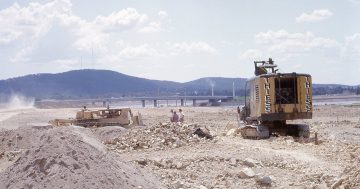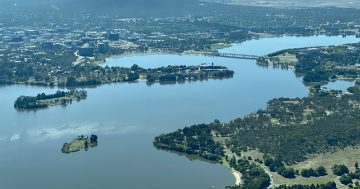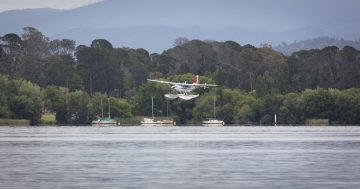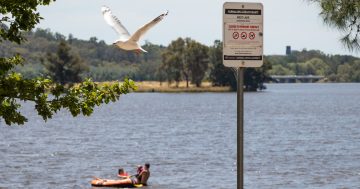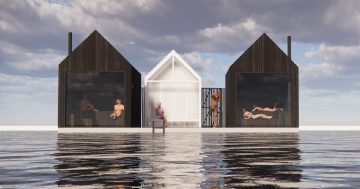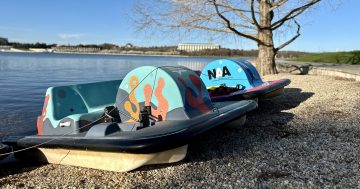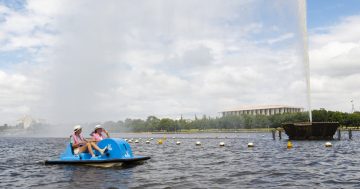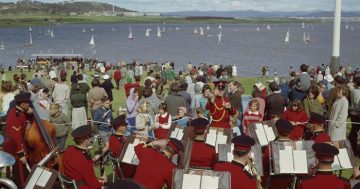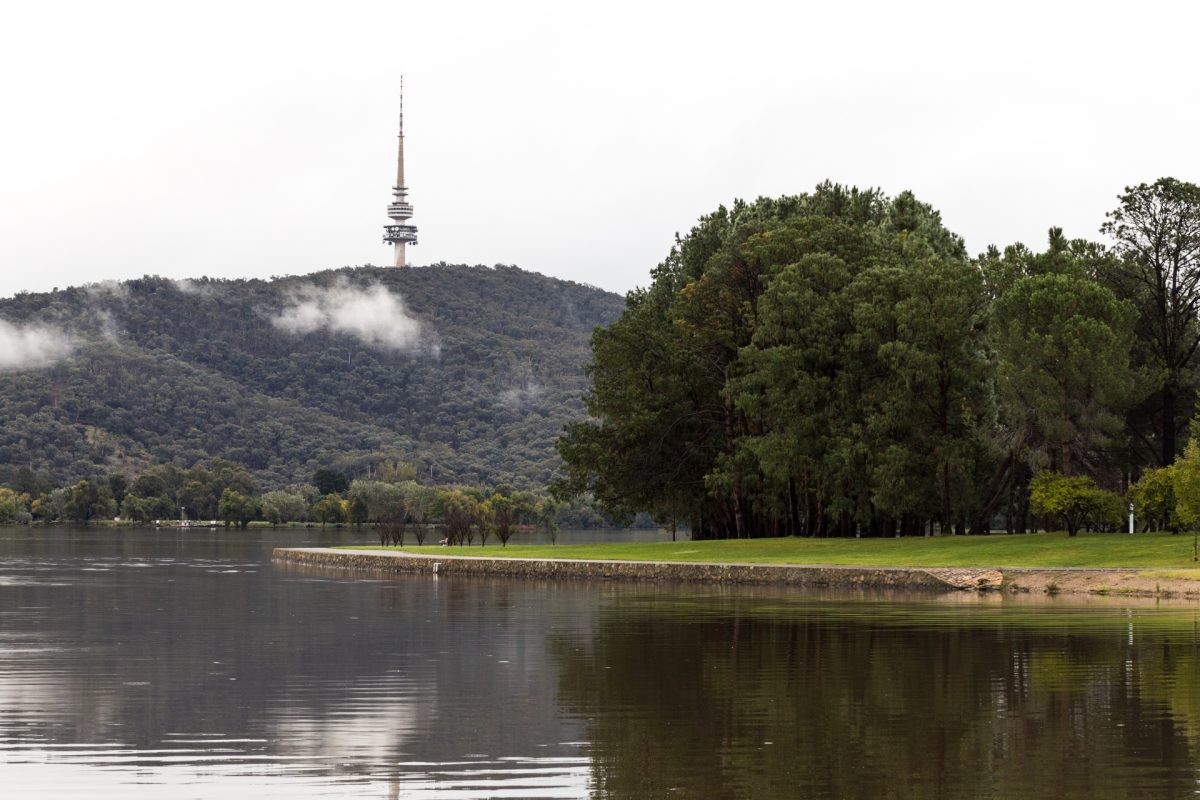
In 1915, the foreman in charge of digging Canberra’s main sewer doubted Lake Burley Griffin would ever hold water. Photo: Michelle Kroll.
The story goes that in 1959, steel tube piles were being driven into Lake Burley Griffin’s bedrock for the Kings Avenue Bridge when one suddenly disappeared into the ground. A series of loud and echoey clangs followed as if it were “hitting the sides on its way down” but the workers never heard it reach the bottom.
It turns out they’d stumbled across a deep cavern beneath the lake. And it’s not the only one.
Decades earlier in 1915, miners driving the tunnel for the city’s main sewer from Hotel Canberra to Weston Creek came up against so many holes in the ground the foreman said Walter Burley Griffin’s proposed lake would likely never hold any water.
Rumours have long abounded of secret tunnels and caves beneath Canberra. The truth is that only one was ever accessible, at least before it disappeared beneath the surface of the lake.
Before the Molonglo River was dammed in 1963 to create Lake Burley Griffin, the Limestone Plains Cave (or Lennox House Cave) below the Acton foreshore measured eight metres deep and doubled as a rubbish tip.
Local environmental scientist and consultant Mark Butz says there are plenty more caves and caverns but it looks more like “Swiss cheese”.
“People have this idea there are vast caverns down there, but really most of them are just lots of little holes,” he says.
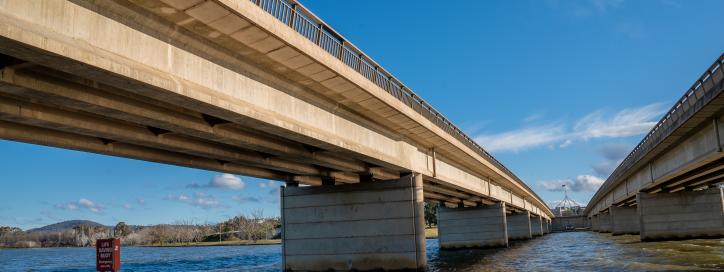
Kings Avenue Bridge. Photo: Dom Northcott, National Capital Authority (NCA).
The technical term for this is karst. It refers to a landscape underlain by limestone, which has been eroded to produce caverns, underground streams, fissures and sink holes.
Before the Europeans arrived, it’s thought the local Ngunnawal people used the caverns and caves for shelter and burial purposes. There are some reports of artwork too.
When the first explorers followed the course of the Murrumbidgee River in the 19th century to where Canberra is today, they discovered the area was littered with isolated outcrops of limestone and promptly dubbed it the Limestone Plains.
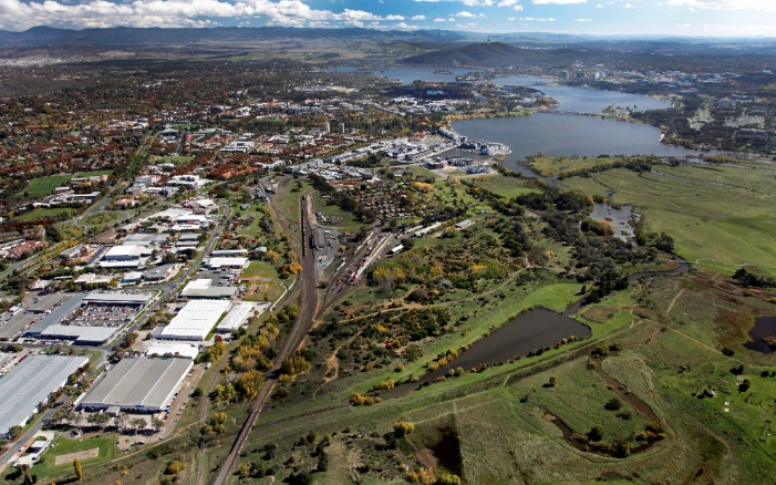
Overlooking the Jerrabomberra Wetlands, near the proposed site of East Lake. Photo: ACT Government.
These start at the north in the current-day suburbs of Harrison, Throsby and Hackett and extend through Braddon, Lyneham, Dickson, Acton and Red Hill through to Coppins Crossing and Jerrabomberra Creek. The rock lies anywhere from six to 50 metres below the surface.
Initially, it was a boon for business because the lime could be extracted to create mortar.
“But the other amazing thing about limestone is that it is soluble in water, it dissolves and creates cavities, and these cavities carry more water or they fill up with water and clay,” Mark says.
Over the years, this presented no shortage of headaches for Canberra’s engineers and not just at the King’s Avenue Bridge.
In the late 1960s, the foundation of the old Canberra Hospital on Acton Peninsula began to develop cracks as the limestone underneath broke apart. Only a costly drilling operation could save the hospital from sinking.
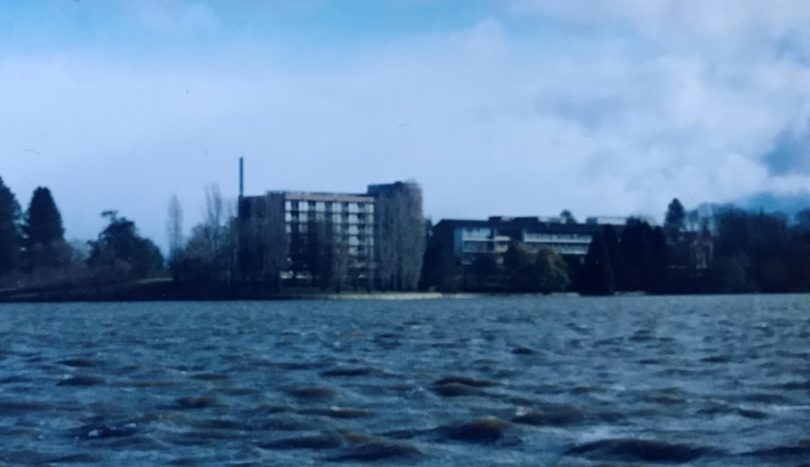
The old Canberra Hospital on Acton Peninsula, now home to the National Museum of Australia. Photo: Gavin Dennett.
The filling of the lake raised the groundwater level and several surrounding buildings began to suffer as water seeped into foundations and lift wells.
Soon after construction began on the seven-storey Treasury building, piers began sinking. Drilling revealed the site was underlain by a network of holes “at all elevations” and their location, size and shape was “impossible to predict”.
“They were pumping water out at 180,000 litres per hour, or enough to fill two Olympic swimming pools a day,” Mark says.
Engineers were forced to redesign the foundations and develop a special piling system to support the building.
Today, the ACT Government plans to release land for 650 new homes at East Lake, a patch of land bounded by Kingston Foreshore, Jerrabomberra Wetlands and Canberra Avenue – and earmarked for urban development since 2004.
Planning is now in its final stages, but no matter what happens, a low clump of grey rocks near the former Weights and Measures building of Newcastle House will be protected.
It’s one of two limestone outcrops that remain bare and visible, tangible reminders of the Limestone Plains.












